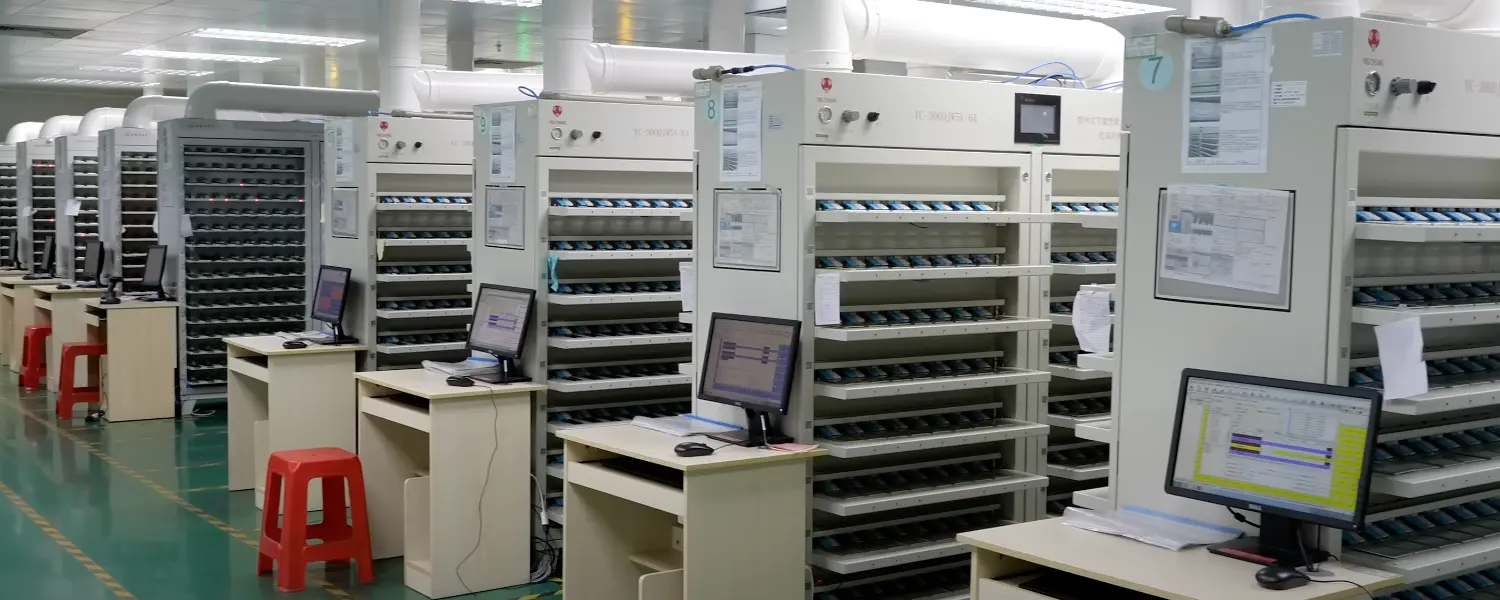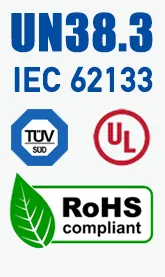
Lithium Ion Battery Formation Aging Process
Lithium-ion batteries' production and manufacture are closely linked with each process step. Overall, the production of lithium ion batteries includes the pole piece manufacturing process, battery assembly process, and final liquid injection, sealing formation, and aging processes. In the three-stage process, each function can be divided into several essential methods, and each step will significantly impact the battery's final performance.
Lithium ion Battery Formation
Lithium ion Battery pre-formation is to charge and discharge the manufactured lithium-ion battery with a slight current. After manufacturing lithium ion batteries, it is required to charge and discharge the battery with a slight current. Regarding the purpose of pre-charging, there are mainly two points:
1. After manufacturing lithium ion batteries, they could be better applicable. The physical properties are not suitable, or the phase itself needs to be corrected (such as some metal oxide negative electrodes with alloy mechanism ); it needs to be activated for the first charge and discharge.
2. During the first charging process of the lithium ion battery, Li+ is released from the positive electrode active material. After passing through the electrolyte-diaphragm-electrolyte, it is embedded in the negative electrode graphite material layer. During this process, electrons migrate from the positive pole to the negative pole along the peripheral circuit. Due to the low potential of lithium ions embedded in graphite negative electrode, electrons will first react with electrolyte to form SEI film and some gases.
During this process, some gas will be generated, and a small amount of electrolyte will be consumed. Some manufacturers will perform battery exhaust and liquid replacement operations after this process. Thickness exceeds 10%. For the negative graphite electrode, the amount of gas produced is less, and the exhausting function is not necessary because the SEI film directed during the first charging process hinders the further reaction of electrons and electrolytes, and no gas is generated anymore. This is the source of the irreversible capacity of the graphite system battery. Although irreversible capacity loss is caused, it also makes the battery stable.
Lithium ion Battery Aging
Aging generally refers to the placement of the lithium ion battery after the first charge and formation after the liquid injection is completed. It can be aged at room temperature or high temperature. Both functions make the properties and composition of the SEI film formed after the initial charge and formation more stable. Stability of battery electrochemical performance. There are three primary purposes of aging:
1. After the lithium ion battery is performed, a certain amount of SEI film will be formed on the negative graphite electrode inside the lithium ion battery, but the film structure is tight, and the pores are tiny. Aging the lithium ion battery at high temperatures will help the SEI structure reorganize and form a loose and porous membrane.
2. After formation, the lithium ion battery's voltage is unstable, and its voltage is slightly higher than the actual voltage. The purpose of aging is to make its voltage more accurate and stable.
3. Putting the lithium battery at a high temperature or average temperature for some time can ensure that the electrolyte can fully infiltrate the pole piece, which is conducive to the stability of battery performance.
The lithium ion battery formation-aging process is essential. In actual production, the battery charge and discharge process is selected according to the lithium ion battery material system and structural system. Still, the battery formation must be charged and discharged under low current conditions. After these two fundamental processes, the stabilized battery is divided into capacity, and after packaging and other methods, it can be released.
